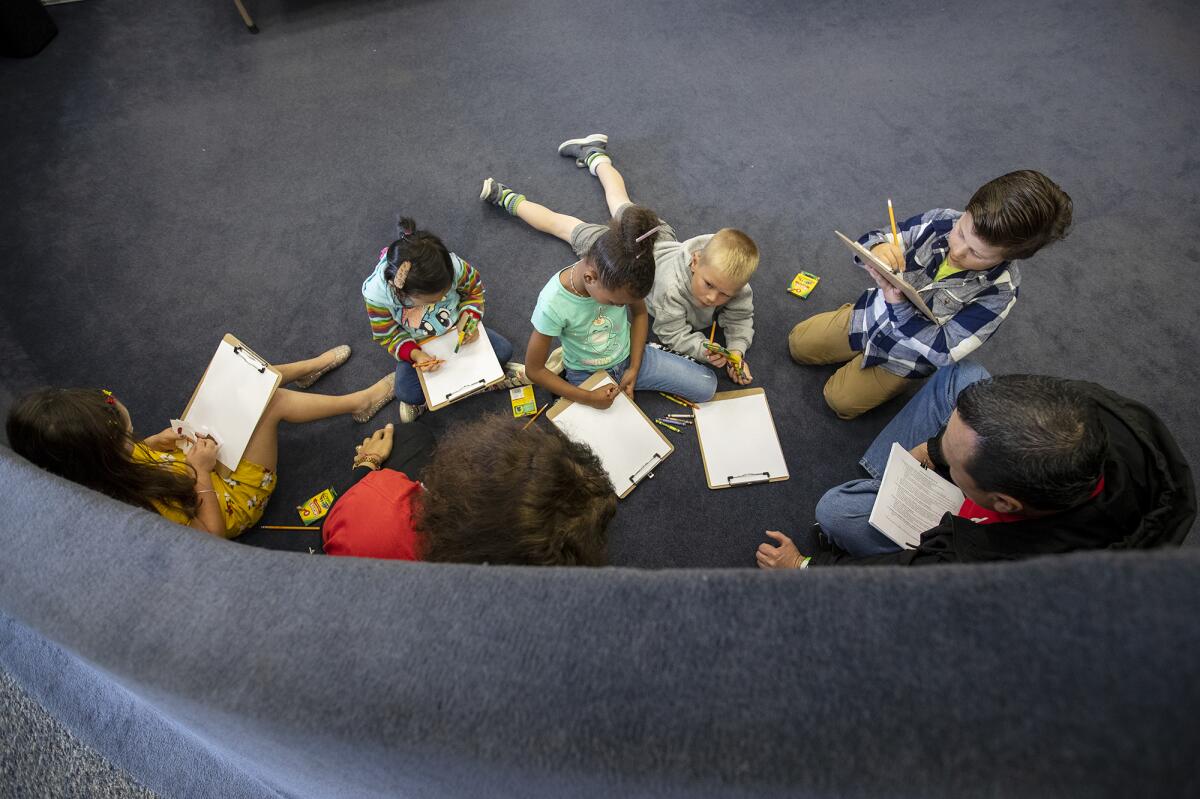Apodaca: The concept of social-emotional learning has drawn unwarranted criticism

What if you discovered that there’s a way to help students become more well-rounded, self-controlled and responsible, thus allowing them to progress socially and academically?
And what if those gains carried through to greater success and satisfaction in their later careers?
Everyone would want that. It would be a slam dunk, right?
Alas, nothing in education comes easily these days. Politics, culture wars and disinformation campaigns run rampant, leading to widespread suspicion and misunderstanding of even the most benign measures. Everything is an argument.
And that’s exactly where we are right now with the educational methods that fall under the broad umbrella known as social-emotional learning, or SEL. Unfortunately, in the world where we now live, SEL, like other mischaracterized concepts like Critical Race Theory, is under attack.
In statehouses and at school board meetings, some politicians and parental rights groups have targeted SEL, demanding that it be abolished. They condemn the strategies associated with SEL as either a waste of valuable teaching time or indoctrination into cultural ideas that they don’t like. If that sounds a bit vague, that’s because the arguments against SEL have also largely been as ill-defined as they are uninformed.
SEL isn’t some newfangled concept. It’s been around for decades and has been an accepted and integral part of curricula at districts across the country. The basic idea behind it is that students benefit from instruction in how to manage their emotions, work collaboratively with others, make good choices, and create and maintain healthy relationships.
Since the COVID-19 pandemic disrupted education and led to alarming setbacks in student learning and social growth, SEL has been considered by many in the education community as more important than ever. Kids lost out on so much during their time away from the classroom and normal school activities. Now, the thinking goes, they are in critical need of support to bring them to a mindset where they are ready to learn and to cope with the demands of a traditional school setting.
Daily Pilot columnist Patrice Apodaca writes that resistance to demographic diversity is driving the new council majority to pass unpopular rules and fight the state over housing issues.
This shouldn’t be controversial. And until the last couple of years, it wasn’t. SEL has historically received widespread acceptance and support. Most people probably weren’t even familiar with the label and probably figured that this type of instruction was just a routine part of K-12 education.
Indeed, even before the social-emotional learning moniker became common, the ideas and methods behind it were long employed and known by many other names — workforce readiness, behavioral skills development, whole child instruction and mindfulness, for example. They included discreet units dedicated to this type of teaching, as well as techniques that were woven into lessons on various subjects and campus activities.
Explicit SEL lessons could focus, for instance, on “self-awareness and self-management,” said Colleen Ferreira, coordinator of Social-Emotional Learning at the Orange County Department of Education.
Students might be asked to discuss how they feel when they become angry or frustrated, then encouraged to utilize ways to responsibly handle those emotions, such as taking a beat to process their feelings and thinking before speaking.
The integration part comes in when situations arise during the course of the day that require intervention. Students might be reminded to use the strategies they’ve been taught to calm themselves; some might receive praise for their handling of incidents. During reading assignments, students might be asked to consider the perspectives of different characters and reflect on the choices they made and how they affected others.
“These are tools they can use the rest of their lives,” said Jami Parsons, director of the OCDE’s Learning Supports Unit.
Research shows that effective SEL programs can make a big difference. Two large-scale reviews of studies on SEL, conducted in 2019 by academics at Loyola University Chicago and the University of Wisconsin, found that it led to 27% more students improving their academic performance, as well as to similar gains in skills and social behaviors and attitudes, and to fewer conduct problems.
Some districts in Orange County have done a commendable job incorporating SEL into their academic instruction, Ferreira said. OCDE is working with schools to create a “vision” for SEL, forming teams that include parents to develop action plans.
Rhonda Marriott Spencer, administrator of OCDE’s Learning Supports Team, acknowledged that educators could do a better job defining SEL, as well as other education concepts, in plain language that the public can easily understand.
“We can walk around using our acronyms and ‘education-ese,’” which can lead to confusion, she said. “That’s something we are working on — and equipping school districts and schools with the tools so they can explain.”
Explaining what SEL really is and what it actually seeks to accomplish should help. It also wouldn’t be a surprise if what is now known as SEL might soon be reincarnated with a new name, in an attempt to sidestep the unwarranted negative attention.
But whatever we call it, SEL is a valuable piece of a well-balanced education. We must support schools that act in the best interests of their students and refuse to succumb to the forces of disinformation.
All the latest on Orange County from Orange County.
Get our free TimesOC newsletter.
You may occasionally receive promotional content from the Daily Pilot.





